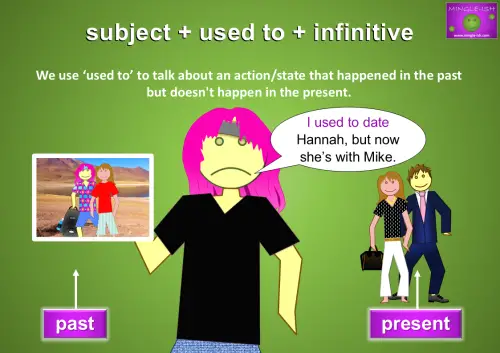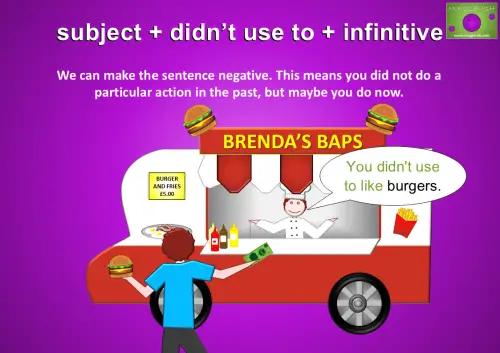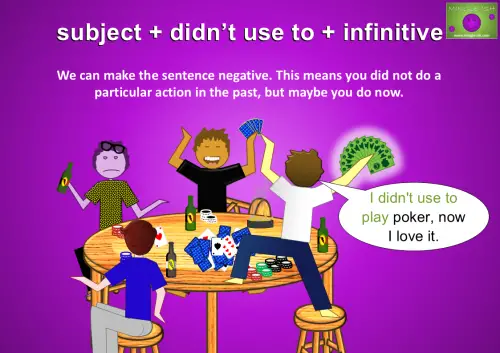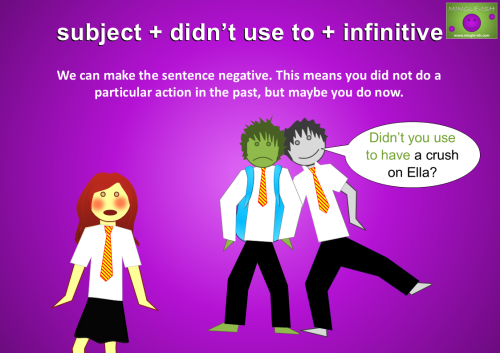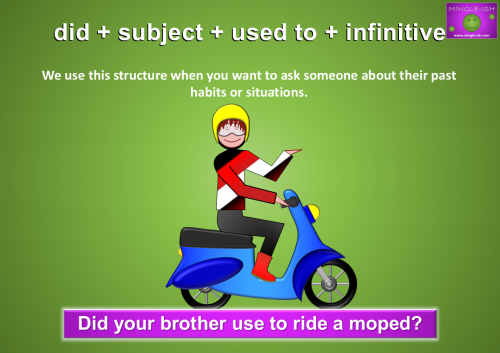Contents
What Does “Used To” Mean?
Structure: Used To + Infinitive
We use ‘used to’ to talk about an action/state that happened in the past but doesn’t happen in the present. It helps us describe how things were different before. Let’s look at how to use it properly! The structure is straightforward: subject + used to + infinitive. The infinitive here is the base form of a verb (like eat, go, study).
For example: I used to go to Girl Guides.
This was when I was a young teenager. Now I’m in my thirties, I don’t go anymore.
Let’s see a few more examples.
- Tom used to play football every weekend, but now he prefers running.
- Sarah used to live in London before moving to Manchester.
- We used to go camping every summer when we were kids.
- Lisa used to ride her bike to work, but now she drives.
- Ben and Lucy used to visit their grandparents every Sunday.
- Rachel used to love spicy food, but now she can’t handle it.
- David used to be really shy, but now he’s much more confident.
**SPEAKING PRACTICE: Practice talking about some hobbies you did when you were younger but don’t do now.
Making It Negative: Didn’t Use To
You can easily negate the sentence by using the structure ‘didn’t use to’. This means an action/state didn’t happen in the past. To talk about things you didn’t do in the past but maybe do now, we simply change the structure to subject + didn’t use to + infinitive.
For example:
- I didn’t use to eat olives. Now I’m older, I absolutely love them.
- Claire didn’t use to exercise regularly, but now she goes to the gym every day.
- We didn’t use to have a car, so we walked everywhere.
- Jack didn’t use to enjoy cooking, but now he loves it.
- They didn’t use to travel much, but now they explore new countries every year.
- Emma didn’t use to like spicy food, but now she eats it all the time.
- I didn’t use to wake up early, but now I’m up at 6 AM every morning.
In negative sentences with “didn’t,” we drop the “d” from “use” because “did” already shows the past tense.
**SPEAKING PRACTICE: Practice talking about some actions you didn’t do when you were younger but do now.
Question Time: Did You Use To?
When you want to ask someone about their past habits or situations, the structure changes slightly to Did + subject + use to + infinitive? This makes it easy to find out what someone’s past life was like. Here are some questions you might ask:
- Did you use to play the piano?
- Did they use to live in London?
- Did she use to like spicy food?
- Did Emma use to sing in the school choir?
- Did your brother use to drive a motorbike?
- Did you use to travel a lot when you were younger?
It’s a fun way to get people talking about their memories!
“Used To” Quiz: Test Yourself
Watch the video and take the quiz to see how well you know “used to” for past habits. Ready for the challenge? Press play and fill in the blanks!
Key Points to Remember
Just remember these three points and you’ll be well on your way to using “used to” like a pro.
- “Used to” talks about things that happened regularly in the past.
- To make it negative, use “didn’t use to” (no “d” on “use”).
- For questions, use “Did you use to…?”
Now you’re ready to confidently talk about your past habits and states. Go ahead, start reminiscing, and share those memories using “used to”!
